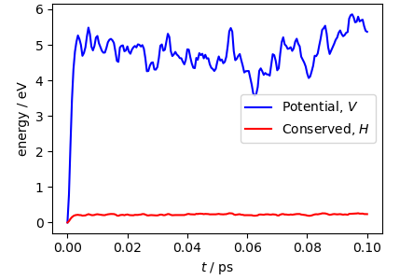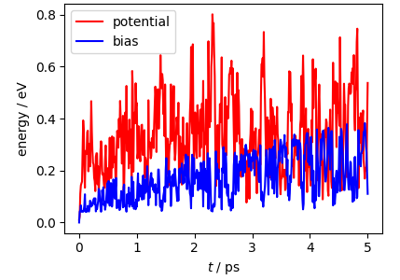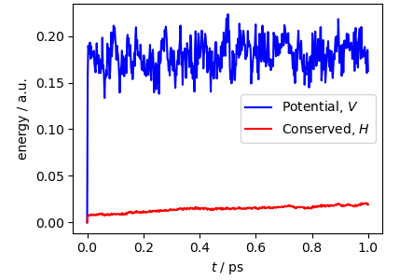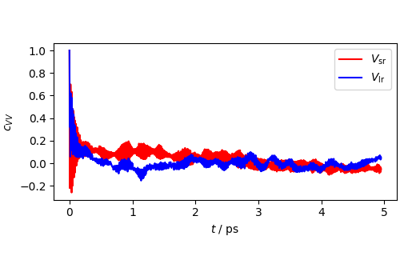Nuclear quantum effects¶
Most atomistic simulations treat nuclei as classical particles, that sample a Boltzmann distribution. This approximation breaks down for light nuclei (hydrogen above all) and high-frequency vibrations, requiring more sophisticated statistical sampling to compute accurate statistical and dynamical properties.
Path integral molecular dynamics

Path integral metadynamics

Quantum heat capacity of water

Multiple time stepping and ring-polymer contraction
